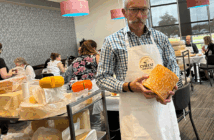By Fiona Acheson, head of food, beverage, and consumer goods at NZTE
Last year, NZTE undertook research to understand the influences behind consumer purchase behaviour across Asia. That research showed clear differences between pre-Covid shopping behaviour and today.
These differences include buying more online, buying more fresh food, buying better quality food, and buying more family-sized portions as people return to cooking from home. In Japan, the NZTE team delved into these shifts and surfaced four key trends:
Japan consumer trends
- Special moments: “I miss being able to get away and want to enjoy my current situation as much as possible – I am going to create a meal at home that reminds me of a special moment when I was able to travel.”
- Affordable treats: “I can afford to spend extra on my meal to make myself feel good as I am not spending money on other things.”
- 7 meal: “As I’m staying at home, I don’t get as hungry so I want something smaller than a normal meal.”
- Health: “I have had time to think about my health – I want to have a healthy diet and I worry I might gain weight being at home.”
Another shift is an increased purchase of frozen food. Japanese consumers have typically preferred fresh produce but started using frozen food during the pandemic, leading to a change in perception about the quality of frozen food. Freezer company sales data (by unit) shows a 170% increase in 2020 and a 120% increase in 2021 (vs 2019).
How New Zealand companies responded to these trends
- ANZCO Foods and Silver Fern Farms recognised that supplying food services was going to be challenging. Instead, they created gourmet treat opportunities for consumers at home. By communicating the goodness of grass-fed meat they were able to tap into the health trend.
- Fonterra and Westgold dialed up their grass-fed messaging, which resonated with consumers seeking more ethical choices.
- Cookie Time teamed up with Tom and Luke, another New Zealand brand, to add a healthy offering, and set up a home delivery service as well as enabling consumers to shop online.
- With Japanese children at home for large periods of time, parents become more focussed on healthy, nutritious snacks. Zespri and New Zealand apples made sure they were easily accessible.
For more information on Japan as a market, click here.
Fiona leads NZTE’s Food and Beverage Customers team. She has held roles as NZTE regional director for Greater China, NZTE investment director on the government’s cross-agency investment taskforce, and has also been trade commissioner in Guangzhou and for Malaysia, Indonesia, and Brunei. She has also supported leveraging activities around New Zealand – China free trade agreement and led leveraging programmes around the ASEAN–Australia–New Zealand and Malaysia–New Zealand FTAs.
The information and opinions within this column are not necessarily the views or opinions of Hot Source, NZ Food Technology, or the parent company, Hayley Media.





























































































